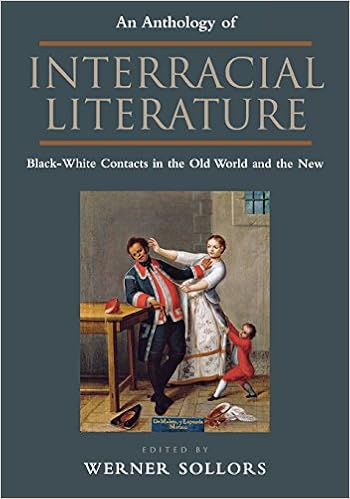An Anthology of Interracial Literature: Black-White Contacts in the Old World and the New
New York University Press
2004-02-01
675 pages
Cloth ISBN: 9780814781432
Paperback ISBN: 9780814781449
Edited by
Werner Sollors, Henry B. and Anne M. Cabot Professor of English Literature and Professor of African and African American Studies
Harvard University

A white knight meets his half-black half-brother in battle. A black hero marries a white woman. A slave mother kills her child by a rapist-master. A white-looking person of partly African ancestry passes for white. A master and a slave change places for a single night. An interracial marriage turns sour. The birth of a child brings a crisis. Such are some of the story lines to be found within the pages of An Anthology of Interracial Literature.
This is the first anthology to explore the literary theme of black-white encounters, of love and family stories that cross—or are crossed by—what came to be considered racial boundaries. The anthology extends from Cleobolus’ ancient Greek riddle to tormented encounters in the modern United States, visiting along the way a German medieval chivalric romance, excerpts from Arabian Nights and Italian Renaissance novellas, scenes and plays from Spain, Denmark, England, and the United States, as well as essays, autobiographical sketches, and numerous poems. The authors of the selections include some of the great names of world literature interspersed with lesser-known writers. Themes of interracial love and family relations, passing, and the figure of the Mulatto are threaded through the volume.
An Anthology of Interracial Literature allows scholars, students, and general readers to grapple with the extraordinary diversity in world literature. As multi-racial identification becomes more widespread the ethnic and cultural roots of world literature takes on new meaning.
Contributors include: Hans Christian Andersen, Gwendolyn Brooks, Elizabeth Barrett Browning, Charles W. Chesnutt, Lydia Maria Child, Kate Chopin, Countee Cullen, Caroline Bond Day, Rita Dove, Alexandre Dumas, Olaudah Equiano, Langston Hughes, Victor Hugo, Charles Johnson, Adrienne Kennedy, Henry Wadsworth Longfellow, Guy de Maupassant, Claude McKay, Eugene O’Neill, Alexander Pushkin, and Jean Toomer.
